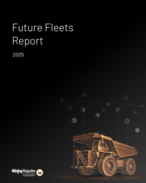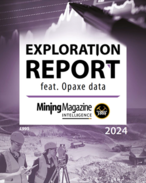When Consol Energy’s McElroy mine was reopened in 1987 after having been idled since 1984, the first ‘bottleneck’ identified was an inefficient use of crews. It was found that they only produced coal for about 6 hours of their 8-hour shifts. The introduction of hot-seat changes increased production time by 25% each day.
Another bottleneck to emerge as production increased by 50% to 10,170 tons per day. Haulage capacity had to be increased and the main belt was upgraded from 48 inches to a 54 inch belt and quicker chain haulage allowed for faster loading of rail cars.
“As we addressed the issues that were hampering production in the old portion of the mine, it became obvious that timing issues between the longwall and miner sections would limit production,” DeBolt said.
The decision was made to change development strategies from 4 entry development panels to 3 entry panels, reducing the footage mined to develop a longwall panel by 22% over the 4-entry system. At the same time the longwall face was widened from 600 feet to 750 feet, saving one development section every four panels in a block of coal. Further widening to 1,000 feet in 1994 reaped additional savings of one development section every three panels.
Daily tonnage increased to 16,000 tons per day but the rail haulage system topped out in this range. In 1995 McElroy started a project to replace the rail haulage with belts. New entries were driven from 4 South to the underground rotary dump area. A 72-inch belt line was installed and the slope belt was upgraded to 72”. The new beltline came on line in 1997 allowing daily tonnage to increase to 21,000 tons.
By 1998 daily tonnages had increased to 26,700 tons and the ‘bottleneck’ had become the 7,000 ton raw silo. This was overcome by the construction of an additional 25,000 ton raw storage silo.
“Along with a 7,500 ton in-mine bunker and a major addition to the preparation plant, the mine will soon push our Bailey and Enlow Fork mines for top honors as CONSOL Energy’s largest producer. The ‘bottleneck’ will never disappear and it will continue to be our job to identify it and move it along to its new location,” DeBolt said.
Longwall USA was sponsored by Coal Age. This article is based on DeBolt's presentation at the conference.























